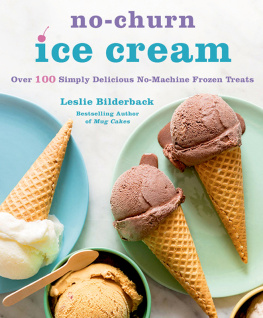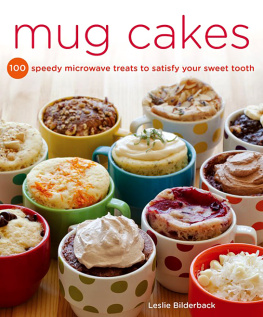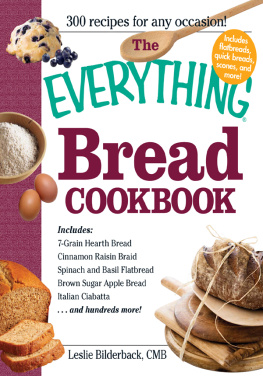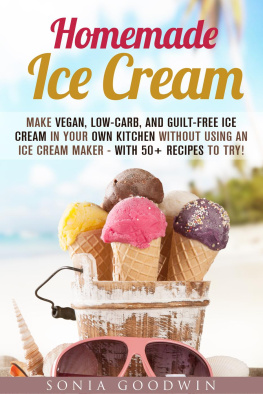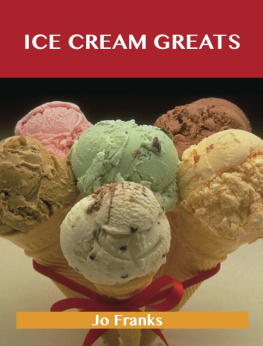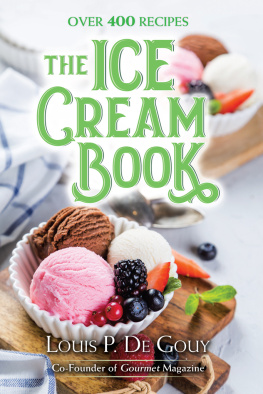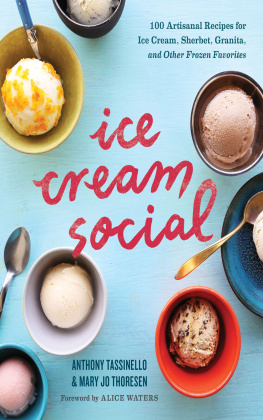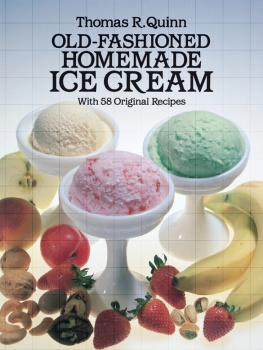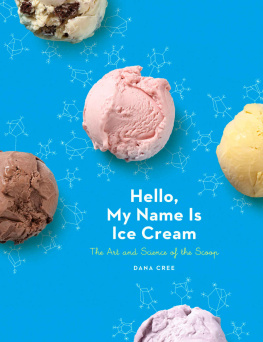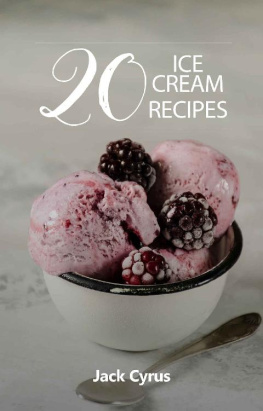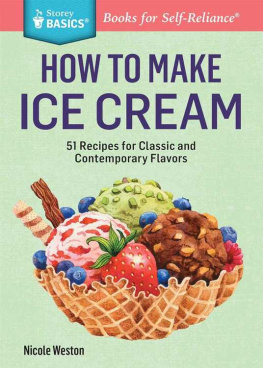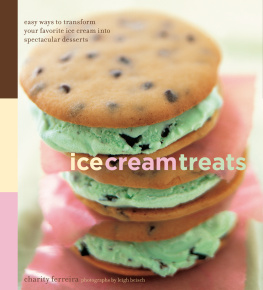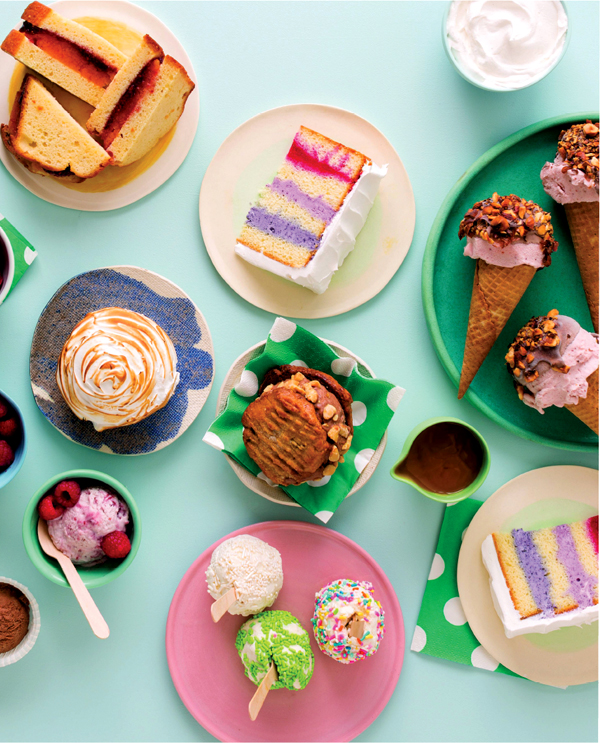The author and publisher have provided this e-book to you for your personal use only. You may not make this e-book publicly available in any way. Copyright infringement is against the law. If you believe the copy of this e-book you are reading infringes on the authors copyright, please notify the publisher at: http://us.macmillanusa.com/piracy.
Thanks to BJ Berti at St. Martins Press, for her continued support; to Katherine Latshaw for her brilliant ideas; to the staff and customers at Heirloom Bakery for being my flavor guinea pigs; to Dr. Manuel Aguilar for his patience; and especially to Emma, Claire, and Bill for their support, exquisite taste buds, and willingness to give up so much freezer space for ice cream. Your sacrifice is not forgotten.
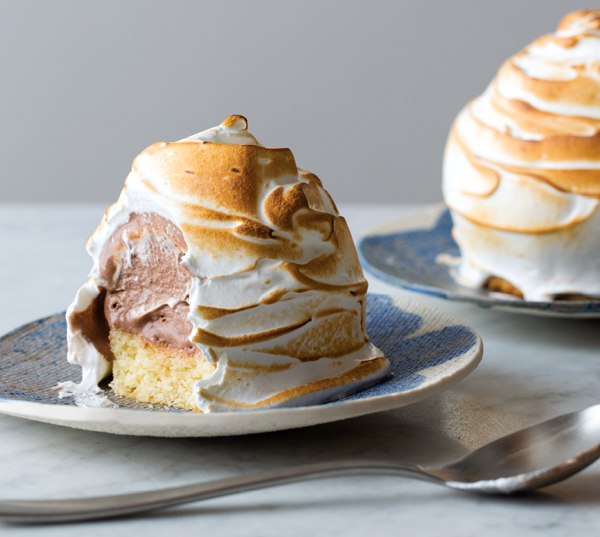
To all the international servicemen and women, doctors, dentists, veterinarians, and myriad specialists who welcomed me aboard the USSPearl Harborfor the Pacific Partnership Humanitarian Mission of 2013and especially the CSs and FSAs who kept them fed (the only crew making croissants from scratch in the middle of the Pacific Ocean). I started this book on board, and finished it with yall in mind.
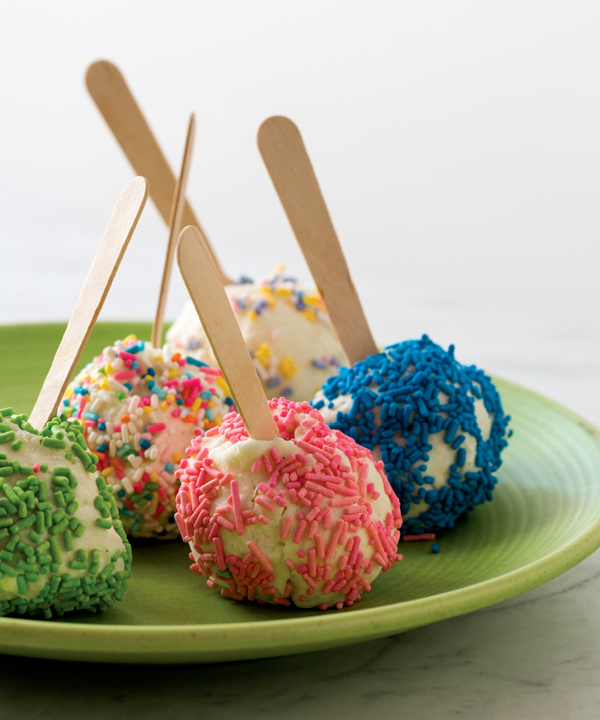
Vanilla Ice Cream Sprinkle Pops
Welcome, extreme ice cream lovers. You clearly are a breed apart if you are willing to make ice cream yourself. Congratulations on finding not only this quick-and-easy ice cream methodwithout an ice cream machinebut dozens and dozens of easy, impressive, satisfying dessert ideas. Here you will learn about flavor compatibility, plate presentations, food history, and nifty tricks of the trade.
Sure, sometimes it is enough to just buy something at the store ready-madesomething we all do from time to time. There is no shame in that. But there are times when it is not enough to simply provide a dessert. If you are truly interested in food as a means of expressing love, appreciation, and art, then you will enjoy the following pages. Yes, it is darn easy. Crazy easy. But it is also so good that no one needs to ever know just how easy it was.
If you are interested in dessert, flavor, and creativity, you are in the right place.
ICE CREAM BASICS
This no-churn ice cream method is based on the classic French dessert called parfait. Unlike the American layered parfait your grandma made with Jell-O and Cool Whip, the French version is vanilla custard, lightened with whipped cream, and frozen in a loaf pan. Once frozen, the French parfait is sliced, like a frozen sweet pt.
While this no-churn ice cream method nods to the classic, it is 100 percent built to scoop. It is also built to make in a hurry, with no ice cream machine, and no difficult techniques (unless you want them). This is accomplished in two ways: First, the air normally incorporated by a churning ice cream machine is added instead in the form of whipped cream. Second, the custard, which is a classic pastry preparation that takes some time to master, is replaced by sweetened condensed milk. If you are interested in learning the recipe for custard, it is here, too, in the final chapter.
The intention is not only to get you to make ice cream at home, but to get you to make really good ice cream at home, repeatedly. Toward that goal, you will find both classic and cutting edgeflavored recipes in this book.
You will also find myriad accompaniments, because the enjoyment of a dessert comes not only from the way it tastes, but also the things it is paired with and the way it is presented. Each recipe offers accompaniment ideas. And because I know you are going to get excited about the possibilities, there is a section to help you with the basics of dessert creation.
Start simple, by all means. But dont stop there.
A LITTLE HISTORY OF ICE CREAM
There are a dozen stories about the inception of ice cream. Few are probably true, and even fewer are actually discussing ice cream. Most are really about early snow cones. For instance, it is a common tale that Nero had snow brought into Rome from the mountains by human chain so he could sweeten it with honey and wine. Not ice cream, but at least it sounds fairly palatable. Even earlier during the Tang dynasty, around 3000 BC, Imperial treats of shaved ice dripping with fermented mares milk and camphor were created. (No, really.) This was not really ice cream either, but at least we were adding dairy to the list of ingredients (of a sort). If it is true that Marco Polo brought these treats back to Europe, I find it hard to believe that he would have been taken seriously, especially at the suggestion that Venetians start milking their horses.
While the Italians love to tout the ever-present importance of Catherine de Medici on the history of food (which is, as far as I can tell, wildly exaggerated) it was, in all likelihood, the Italians (probably Sicilians) who first gave us frozen custard, which has come to be known in that region as gelato. It probably did spread to France (though probably not with the Medicis), and followed the French aristocracy to the far reaches of the world, including the new one, with my favorite food-loving president, Thomas Jefferson.
Lots of recipes for ice cream pop up in early American cookbooks, but the majority of early recipes are simply infused cream, sweetened and flavored primarily with fruits, then placed in a larger container of ice and salt and stirred. Cooling down the sweet cream (the richest part of the milk) with ice thickened it. The earliest written recipe for vanilla bean custardbased ice cream was probably brought from France to the United States in the 1780s, but it is unlikely that it was the first recipe of its kind, as the written recipe always follows its widespread use.
THE INGREDIENTS
CREAM
There are many creams on the market, which can make shopping for these recipes confusing. Rest at ease, Americathey will all work in these recipes. Different versions of cream contain different fat contents. That means, when you want it richer, you need to increase the fat content in your cream, and vice versa. Professional pastry chefs use manufacturing cream, with a whopping 40% butterfat. Regular grocery store whipping cream has 30%, while heavy cream (sometimes called heavy whipping cream) has 36%. The benefit of the added fat (besides allowing you to buy larger clothes) is that heavier cream holds its peak longer. This is important if you intend on holding whipped cream for a number of hours (as bakeries do in display cases), but for the average home cook, it isnt an issue.

